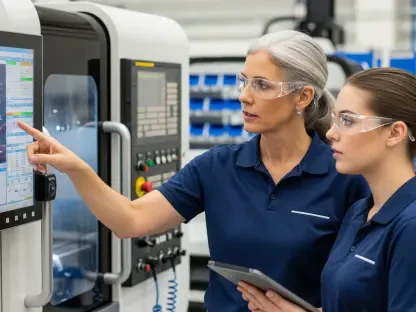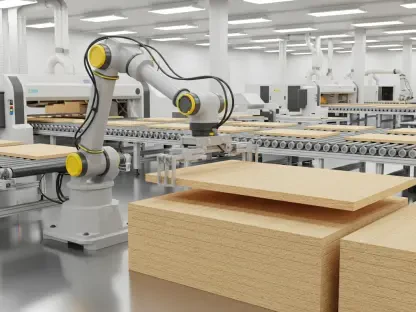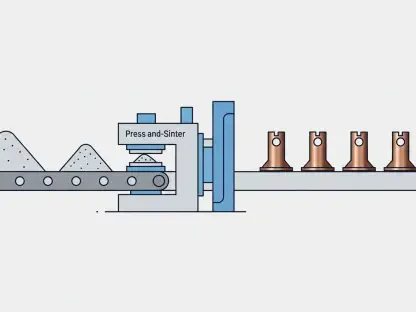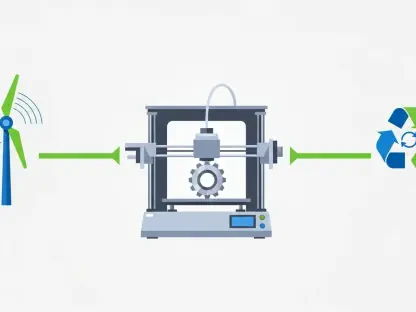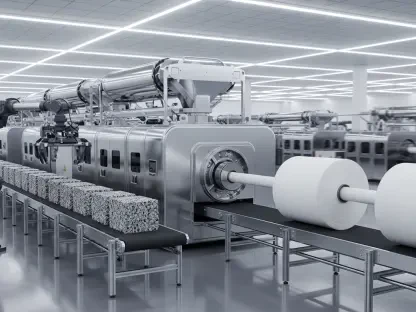In the rapidly advancing field of architecture and construction, the exploration of 3D-printed homes offers a fascinating glimpse into the future of sustainable and resilient infrastructure. Recent studies, particularly at the University of Bristol, have ventured into new territory, examining the earthquake resilience of these innovative structures. This groundbreaking research delves into the capacity of 3D-printed concrete to withstand seismic forces, utilizing the largest shaking table in the UK to simulate various earthquake scenarios. The outcome could be crucial in shaping future construction norms, especially in regions prone to seismic activity. The study not only focuses on ensuring the robustness of these modern homes but also on making housing more accessible and sustainable.
Testing the Limits of 3D-Printed Structures
Earthquake Simulation and Testing Apparatus
The University of Bristol embarked on a significant experimental study, employing a colossal shaking table capable of supporting up to 55 tons to test the seismic resilience of 3D-printed concrete structures. This apparatus allows researchers to accurately simulate the impacts of different earthquake magnitudes, applying varying intensities to evaluate structural responses. The test aims to understand how such innovative construction methods can endure seismic challenges. Using quasi-real-scale models, researchers assess potential vulnerabilities, such as cracking or physical displacement. This method of evaluation provides a comparative analysis with traditional construction techniques, highlighting areas for potential improvement in the design and material composition of 3D-printed homes.
Analyzing Seismic Performance Against Traditional Structures
Through rigorous testing, researchers have gathered valuable data to compare the seismic performance of 3D-printed homes with conventional building practices. Observations focus on identifying weaknesses and strengths, enabling insights into the durability of these structures under seismic stress. The resilience tested includes performance against mild tremors and scenarios simulating catastrophic forces. Identifying areas where 3D-printed structures perform on par or even surpass traditional methods is crucial. These experiments facilitate the refinement of 3D printing technologies, ensuring they meet or exceed current safety standards. Such comparisons also help in understanding how to integrate construction best practices into new technologies, making them viable options for earthquake-prone regions.
Implications for Earthquake-Prone Regions
Enhancing Safety Standards and Economic Viability
The findings from Bristol’s experiment have far-reaching implications for regions vulnerable to earthquakes. By validating the structural integrity of 3D-printed homes, there’s potential for significant advancements in building codes, emphasizing cost-effective and resource-efficient construction methods. These innovations promise a reduction in construction costs without compromising safety or durability, offering affordable and resilient housing solutions. In areas where economic constraints limit accessibility to robust infrastructure, 3D-printed homes could fill the gap. Their adaptability and cost-effectiveness might revolutionize building practices in developing regions, ensuring safe housing while adhering to environmental sustainability practices.
Addressing Global Housing Challenges
The convergence of sustainability and affordability in construction represents a pivotal advancement, addressing global housing shortages and climate crises. These 3D-printed structures promise to deliver not only security but also sustainability, a dual focus essential in today’s urbanizing world. As urban populations expand, safe, affordable housing becomes a critical need, particularly in earthquake-prone locales. This technology has the potential to deliver rapid, scalable housing solutions that maintain structural integrity even during natural disasters. Thus, the broader application of this research could reshape housing policies and provide a blueprint for future development initiatives tackling urbanization challenges.
Integration of Modern Technologies with Traditional Safety Standards
Engineering and Material Optimization
The evolution of 3D-printed construction techniques necessitates a deep understanding of material properties and design optimization. At the University of Bristol, researchers delved into the properties of 3D-printed concrete, looking to align its unique characteristics with existing safety protocols. The focus on engineering design and reinforcement strategies aims to enhance layer bonding and structural cohesion, ensuring that these homes are as safe and reliable as their traditionally built counterparts. Such research is crucial for refining 3D printing processes and embracing innovative designs while maintaining rigorous safety benchmarks. By optimizing material use and construction techniques, engineers can ensure that new structures contribute positively to urban resilience against natural disasters.
Potential for Establishing New Building Codes
A crucial aspect of this technological exploration is setting a precedent for future construction regulations that incorporate 3D printing. Traditional building codes must adapt to accommodate these advancements, ensuring that the adoption of new materials does not compromise public safety. This innovative path requires a careful balance between regulatory needs and technological potential, promoting widespread acceptance and fostering international cooperation in standard setting. Establishing comprehensive safety standards for 3D-printed homes could lay the groundwork for a future where such adaptive and resilient structures become commonplace, providing effective solutions for global housing needs.
Future Considerations in Construction Technologies
Broad Acceptance and Industrial Impacts
This groundbreaking study affirms that 3D-printed homes can meet, and potentially exceed, the seismic standards of traditional construction. As the technology advances, it paves the way for its broader acceptance and utilization within the industry. The integration of 3D printing in architectural design especially benefits areas frequently experiencing natural disasters, delivering sturdier and more reliable housing options. As the construction industry embraces these technologies, they become pivotal in responding to urbanization pressures and evolving environmental challenges. The study underscores the potential for transforming construction methodologies by integrating technology and traditional practices, catering to diverse societal needs while prioritizing safety and sustainability.
Technology, Urbanization, and Environmental Challenges
The field of architecture and construction is experiencing rapid advancements with the exploration of 3D-printed homes, providing an intriguing look into the future of sustainable and resilient infrastructure. Recent research, notably at the University of Bristol, has delved into uncharted territory by investigating the earthquake resilience of these pioneering structures. This innovative study explores the ability of 3D-printed concrete to endure seismic forces, employing the largest shaking table available in the UK to replicate various earthquake conditions. The findings of this research could be instrumental in defining future construction standards, particularly in earthquake-prone regions. The investigation aims not only to ensure the durability of these modern dwellings but also to enhance housing accessibility and sustainability. By focusing on these goals, the research is poised to make a profound impact on how we approach construction in the future, potentially revolutionizing building practices and offering safer, eco-friendly living solutions.


